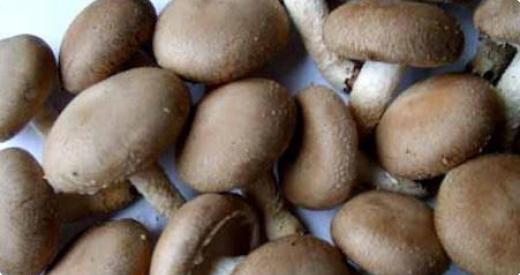
Of all the most luxurious foods of the world, it is astonishing how valued and how deliciously versatile the mushroom can be. Of the fungi family subdivision of Basidiomycotina, of the class Hymenomycetes, this humble variety has been lauded since recorded history. In Japan, a species is named maitake, which literally means “dancing mushrooms”- supposedly because Asian people who found or were given this mushroom were thought to have “danced with joy” because of their good fortune; mushrooms were regularly traded and even used as currency in ancient times.
Winnie Wong of Luen Kee Hoo in Hong Kong has carried on this venerable tradition since 2002, when mobile refrigeration and dehydration technology first came into the fore, importing fresh wild mushrooms from the damp forests of Yunnan in China. Today we join her in this exclusive interview on her estimable work:
AP: What are the market differences of Porcini (and other high end Mushrooms) between Europe and China?
WW: China has a lot of wild mushrooms. Fresh mushrooms are a bit different. No one really knows if that is because of the environment differences, or due to growing in different seasons- for example, porcin in China grows during summer. If based on different textures and aromas, there is not a whole lot of difference between fresh mushrooms and wild mushrooms. However, when they dehydrate, Europe’s technique is more sophisticated, such as the aroma being stronger
AP: What are some of the concerns when sourcing mushrooms between those that are edible vs. those that are dangerous?
WW: There are 250 edible types in Yunnan. Imported from HK are only 12 types- usually the most popular ones. Wild mushrooms are either edible or dangerous. The important point is to identify which are edible. Only someone that is very experienced can identify that. When importing from Yunnan, they have to be sorted out, and on arrival, be sorted out another round. In HK, mushrooms get a lot of moisture so they have to take out the bad ones, so that customers get good quality.
AP: What regions in China grow the highest quality mushrooms? How do you define “quality” mushrooms and their characteristics? Do you believe there is a difference between how the Chinese define quality vs the Europeans?
WW: Yunnan is the richest province in wild mushrooms and widest varieties. There are other places. The environment of Yunnan is not polluted, so they are known to have better texture and aroma.
AP: What would be considered as the most expensive type of mushroom in China and how should it be prepared?
WW: The most experienced dry- morel, because they are exported a lot to Europe. They have very strong nutritional value. The supplies are relatively lower than the other ones. It is based on supply and demand. There are not a lot available, and are known to be very expensive.
Mutsutake, also because it is exported a lot to Japan, and is known to boost immune system. They are good for a lot of different kinds of medicinal values.
AP: Are there any local wineries or vineyards from the regions you source that you know of?
WW: In Yunnan, there are vineyards. I don’t know much about them. They also target the Chinese market. Please research.
AP: If you were to choose between European vs. Asian species mushrooms, which ones would you prefer?
WW: Type of wild mushrooms that are mostly from Yunnan. Some mushrooms in HK and European countries such as porcini, morel, shatorel, etc. Korea, Japan, and Canada, the musutake mushroom. Permin mushrooms are also good. HK has 12 types that surpasses all the other countries. Yunnan can provide delicious and nutritional mushrooms. In HK, they cook them in hot pot or fry them with chilli for a hot, spicy and oily flavour. I have worked with different chefs to understand mushrooms- to understand the texture and how Yunnan does it. Chef Chan spends a lot of time testing different ways of cooking to fit into the local culture. He used a lot of truffle to put into the suckling pig two years ago. They do it for Chinese chicken too, depending on the different way of cooking. They can do anything with it depending on the culture. They can also make use of dry mushrooms to put on top of fresh porcini mushrooms, truffles mixed with meat, or morel to be put in dessert- all depending on the chef’s interpretation. People would pair it with either red or white wine. Usually appetizers with white wine, Japanese mushrooms with sake, or fried mushrooms with beer. Usually people would go for wine. Apart from Chinese restaurants, western restaurants would use mushrooms for promotions depending on the season. Western cuisines usually sautée them and put them as a side dish. There is much less variety than Chinese cuisine. It also depends on where you are eating. If you are in Italy, then porcini mushrooms. If making soup, then Chinese mushrooms. It depends on the cuisine, not about whether the chef knows how to cook it, or if it is good or not.









